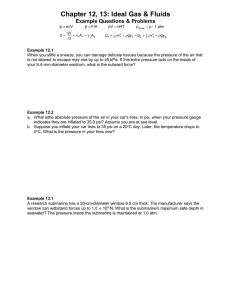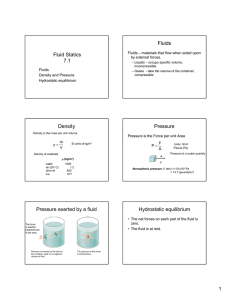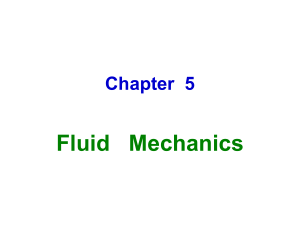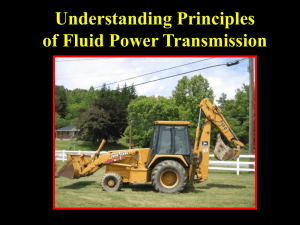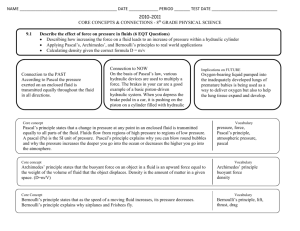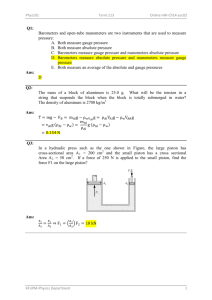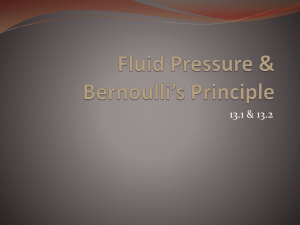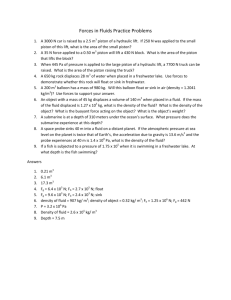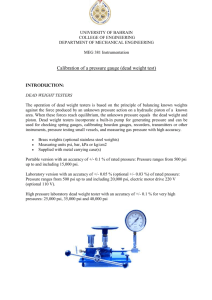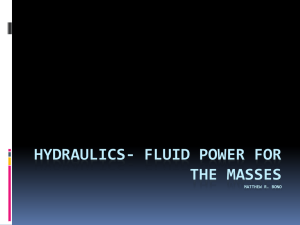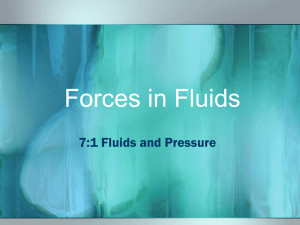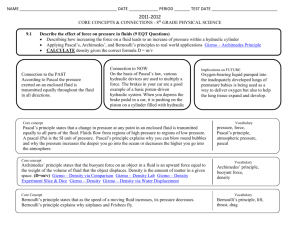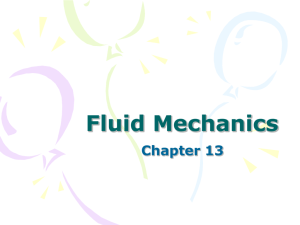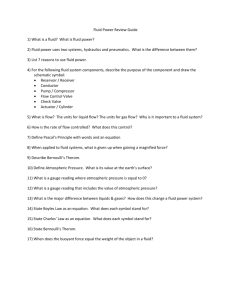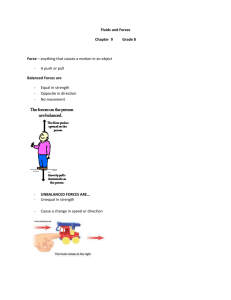Pressure - Ms. Trapp`s Physics
advertisement
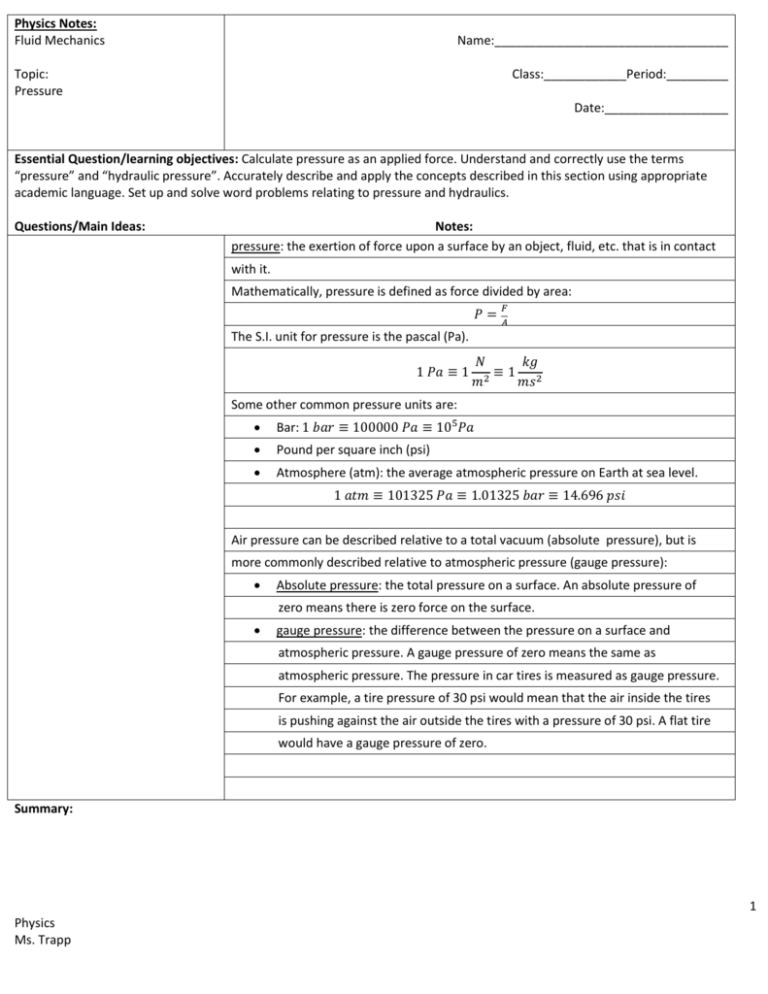
Physics Notes: Fluid Mechanics Name:__________________________________ Topic: Pressure Class:____________Period:_________ Date:__________________ Essential Question/learning objectives: Calculate pressure as an applied force. Understand and correctly use the terms “pressure” and “hydraulic pressure”. Accurately describe and apply the concepts described in this section using appropriate academic language. Set up and solve word problems relating to pressure and hydraulics. Questions/Main Ideas: Notes: pressure: the exertion of force upon a surface by an object, fluid, etc. that is in contact with it. Mathematically, pressure is defined as force divided by area: 𝐹 𝑃=𝐴 The S.I. unit for pressure is the pascal (Pa). 1 𝑃𝑎 ≡ 1 𝑁 𝑘𝑔 ≡ 1 𝑚2 𝑚𝑠 2 Some other common pressure units are: Bar: 1 𝑏𝑎𝑟 ≡ 100000 𝑃𝑎 ≡ 105 𝑃𝑎 Pound per square inch (psi) Atmosphere (atm): the average atmospheric pressure on Earth at sea level. 1 𝑎𝑡𝑚 ≡ 101325 𝑃𝑎 ≡ 1.01325 𝑏𝑎𝑟 ≡ 14.696 𝑝𝑠𝑖 Air pressure can be described relative to a total vacuum (absolute pressure), but is more commonly described relative to atmospheric pressure (gauge pressure): Absolute pressure: the total pressure on a surface. An absolute pressure of zero means there is zero force on the surface. gauge pressure: the difference between the pressure on a surface and atmospheric pressure. A gauge pressure of zero means the same as atmospheric pressure. The pressure in car tires is measured as gauge pressure. For example, a tire pressure of 30 psi would mean that the air inside the tires is pushing against the air outside the tires with a pressure of 30 psi. A flat tire would have a gauge pressure of zero. Summary: 1 Physics Ms. Trapp Sample Problem Q: What is the pressure caused by a force of 25 N acting on a piston with an area of 0.05𝑚2 ? 25𝑁 A: 𝑃 = 𝐴𝐹 = 0.05𝑚2 = 500 𝑃𝑎 Hydraulic Pressure Pascal’s Principle, which was discovered by the French mathematician Blaise Pascal, states that any pressure applied to a fluid is transmitted uniformly throughout the fluid. Because 𝑃 = 𝐴𝐹, if the pressure is constant, then the force can be increased by increasing the area where you want the force to be applied. Thus: 𝑃1 = 𝑃2 which means 𝐹1 𝐴1 = 𝐹2 𝐴2 This principle is called “hydraulics”: Conservation of energy tells us that the work done by 𝐹1 must equal the work done by 𝐹2 , which means 𝐹1 must act over a considerably larger distance than 𝐹2 . This is how hydraulic brakes work in cars. When you step on the brake pedal, the hydraulic pressure is transmitted to the master cylinder and then to the slave cylinders. The master cylinder is much smaller in diameter than the slave cylinders, which means the force applied to the brake pads is considerably greater than the force from your foot. Summary: 2 Physics Ms. Trapp Sample Problem Q: In a hydraulic system, a force of 25 N will be applied to a piston with and area of 0.5𝑚2. If the force needs to lift a weight of 500 N, what must be the area of the piston supporting the 500 N weight? 𝐹 𝐹 A: 𝐴1 = 𝐴2 1 25 𝑁 0.5𝑚2 2 = 500 𝑁 𝐴2 25𝐴2 = (500)(0.5) 25𝐴2 = 250 𝐴2 = 10𝑚2 Summary: 3 Physics Ms. Trapp
